
 Cézanne, Paul: Landscapes
Cézanne, Paul: Landscapes
Cézanne immortalized the Provençal countryside with his broad, panoramic
views. Often these are framed in branches, sometimes with architectural
elements, but seldom with human activity. These too are still lifes.
Cézanne's landscapes were not painted in the open air, as were those of the
Impressionists,
nor were they captured first with a camera. He
composed the pictures the way he wanted them -- arranging the trees and
the houses, probably gleaned from his sketchbooks, on the canvas in the
configurations he decided upon.
Cézanne understood that a painting could not really do its subject
justice. He knew that colors in nature and their combination with
natural light could never be truly reproduced. He saw himself as an
interpreter who had to accept the limitations of the medium and tried
to transfer the images onto canvas the best way he could. He attempted
to bridge the natural and artistic worlds. Hence Cézanne's works, in
comparison with the paintings of many other Impressionists, only make
sense as a whole, not in snippets, as the brush strokes and colors are
meant to be interdependent on one another. This is especially true for
pictures painted in the latter part of his career, when he used color
in short strokes or in almost mosaic patches, all of equal intensity,
throughout an entire painting. In his striving for perfection, this meant
retouching the entire picture to recreate the all-important harmony.
No wonder he scared his sitters.
He sometimes worked on the same picture for years, never satisfied with
the results. He seldom signed his works, because he never considered them
finished. Those he did sign had his mark of approval.
During the last decade of his life, Cézanne's paintings became more
simplified, the objects in his landscapes reduced to components --
cylinders, cones and spheres. He is often seen as anticipating cubist
and abstract art, because he reduced the imperfect forms of nature to
these essential shapes. By the time of his death in 1906,
Picasso and
Braque
were in the midst of exploring the most radical implications of his style.
Maybe the world has finally caught up with Cézanne. Complexity is more
admired now than it was 100 years ago, and since his reputation precedes
him, perhaps the exhibition at the Grand Palais will make his work
more accessible to the average museum-goer.
-
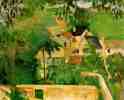 Etude: Paysage a Auvers (Study: Landscape at Auvers)
Etude: Paysage a Auvers (Study: Landscape at Auvers)
c. 1873 (170 Kb); Oil on canvas, 46.3 x 55.2 cm (18 1/4 x 21 3/4");
Philadelphia Museum of Art
-
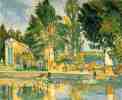 Jas de Buffan, The Pool
Jas de Buffan, The Pool
c. 1876 (150 Kb); Oil on canvas, 46.1 x 56.3 cm (18 1/8 x 22 1/8 in);
The Hermitage, St. Petersburg;
No. 3KP 530. Formerly collection Otto Krebs, Holzdorf
-
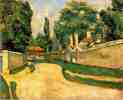 Maisons au bord d'une route
Maisons au bord d'une route
c. 1881 (130 Kb); "Houses Along a Road";
Oil on canvas, 60 x 73.5 cm (23 5/8 x 28 7/8 in);
The Hermitage, St. Petersburg;
No. 3KP 502. Formerly collection Otto Krebs, Holzdorf
-
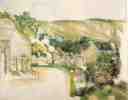 Route tournante à La Roche-Guyon (A Turn in the Road at La Roche-Guyon)
Route tournante à La Roche-Guyon (A Turn in the Road at La Roche-Guyon)
1885 (120 Kb); Oil on canvas, 64.2 x 80 cm (25 3/8 x 31 1/2");
Smith College Museum of Art, Northampton, MA;
Venturi no. 441
-
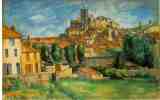 Gardanne
Gardanne
1885-86 (130 Kb); Oil on canvas, 65 x 100 cm (25 5/8 x 39 3/8 in);
The Barnes Foundation, Merion, Pennsylvania
-
 Gardanne
Gardanne
1885-86 (170 Kb); Oil on canvas, 92 x 74.5 cm (36 1/4 x 29 3/8");
The Brooklyn Museum, NY; Venturi no. 431
-
 The Bay from L'Estaque
The Bay from L'Estaque
-
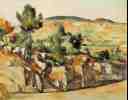 Montagnes en Provence (Mountains in Provence)
Montagnes en Provence (Mountains in Provence)
1886-90 (140 Kb); Oil on canvas, 63.5 x 79.4 cm (25 x 31 3/8");
National Gallery, London; Venturi no. 491
-
 Road at Chantilly
Road at Chantilly
-
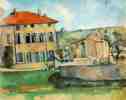 Maison et ferme du Jas de Bouffan (House and Farm at Jas de Bouffan)
Maison et ferme du Jas de Bouffan (House and Farm at Jas de Bouffan)
1889-90 (140 Kb); Oil on canvas, 60.5 x 73.5 cm (23 3/4 x 29");
Narodni Galerie, Prague; Venturi no. 460
-
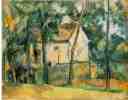 Maison et arbres
Maison et arbres
1890-94 (160 Kb); House and Trees;
Oil on canvas, 65.2 x 81 cm (25 5/8 x 31 7/8 in);
The Barnes Foundation, Merion, Pennsylvania
-
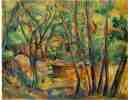 Well: Millstone and Cistern Under Trees (Meule et citerne sous bois)
Well: Millstone and Cistern Under Trees (Meule et citerne sous bois)
1892 (170 Kb); Oil on canvas, 65 x 81 cm (25 5/8 x 31 7/8 in);
The Barnes Foundation, Merion, Pennsylvania
-
 The House with Cracked Walls
The House with Cracked Walls
-
 The Great Pine
The Great Pine
-
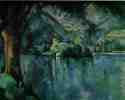 Le lac d'Annecy (Lake Annecy)
Le lac d'Annecy (Lake Annecy)
1896 (190 Kb); Oil on Canvas, 64.2 x 79.1 cm (25 1/4 x 31 1/8 in);
Venturi 762; Courtauld Institute Galleries, London
-
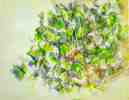 Foliage
Foliage
1895-1900 (150 Kb);
Watercolor and pencil on paper, 44.8 x 56.8 cm (17 5/8 x 22 3/8 in);
The Museum of Modern Art, New York
-
 Woods with Millstone
Woods with Millstone
-
 Turning Road at Montgeroult
Turning Road at Montgeroult
-
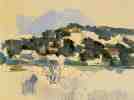 Houses on the Hill (River Bank)
Houses on the Hill (River Bank)
1900-06 (100 Kb); Oil on canvas, 60.3 x 79.2 cm (23 3/4 x 31 3/8 in);
McNay Art Institute, San Antonio, TX
-
 Morning in Provence (Sous-Bois Provençal)
Morning in Provence (Sous-Bois Provençal)
c. 1900-06 (130 Kb); Oil on canvas, 81 x 63 cm (32 x 24 7/8 in);
Albright-Knox Art Gallery, Buffalo, NY
-
 Bend in Road
Bend in Road
1900-06 (160 Kb); Oil on canvas, 81.3 x 64.8 cm (32 x 25 1/2 in);
Private Collection; Venturi 790
-
 Bend in Forest Road
Bend in Forest Road
1902-06 (200 Kb); Oil on canvas, 81.3 x 64.8 cm (32 x 25 1/2 in);
Collection Dr. Ruth Bakwin, New York; Venturi 789
-
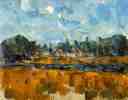 Bords d'une rivière (Riverbanks)
Bords d'une rivière (Riverbanks)
1904-05 (180 Kb);
Oil on canvas, 65 x 81 cm (25 1/4 x 31 7/8 in);
Private collection, Switzerland; Venturi no. 771
-
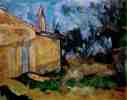 Le Cabanon de Jourdan
Le Cabanon de Jourdan
1906 (190 Kb); Oil on canvas, 65 x 81 cm (25 5/8 x 31 7/8 in);
Collection Riccardo Jucker, Milan; Venturi 805
© 30 Jan 1996,
Nicolas Pioch -
Top -
Up -
Info
Thanks to the
BMW Foundation, the WebMuseum
mirrors,
partners
and contributors for their support.
 Etude: Paysage a Auvers (Study: Landscape at Auvers)
Etude: Paysage a Auvers (Study: Landscape at Auvers)
 Jas de Buffan, The Pool
Jas de Buffan, The Pool
 Maisons au bord d'une route
Maisons au bord d'une route
 Route tournante à La Roche-Guyon (A Turn in the Road at La Roche-Guyon)
Route tournante à La Roche-Guyon (A Turn in the Road at La Roche-Guyon)
 Gardanne
Gardanne
 Gardanne
Gardanne
 Montagnes en Provence (Mountains in Provence)
Montagnes en Provence (Mountains in Provence)
 Maison et ferme du Jas de Bouffan (House and Farm at Jas de Bouffan)
Maison et ferme du Jas de Bouffan (House and Farm at Jas de Bouffan)
 Maison et arbres
Maison et arbres
 Well: Millstone and Cistern Under Trees (Meule et citerne sous bois)
Well: Millstone and Cistern Under Trees (Meule et citerne sous bois)
 Le lac d'Annecy (Lake Annecy)
Le lac d'Annecy (Lake Annecy)
 Foliage
Foliage
 Houses on the Hill (River Bank)
Houses on the Hill (River Bank)
 Morning in Provence (Sous-Bois Provençal)
Morning in Provence (Sous-Bois Provençal)
 Bend in Road
Bend in Road
 Bend in Forest Road
Bend in Forest Road
 Bords d'une rivière (Riverbanks)
Bords d'une rivière (Riverbanks)
 Le Cabanon de Jourdan
Le Cabanon de Jourdan